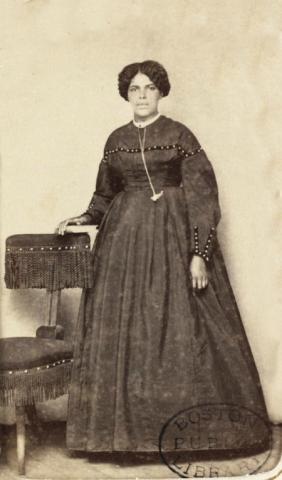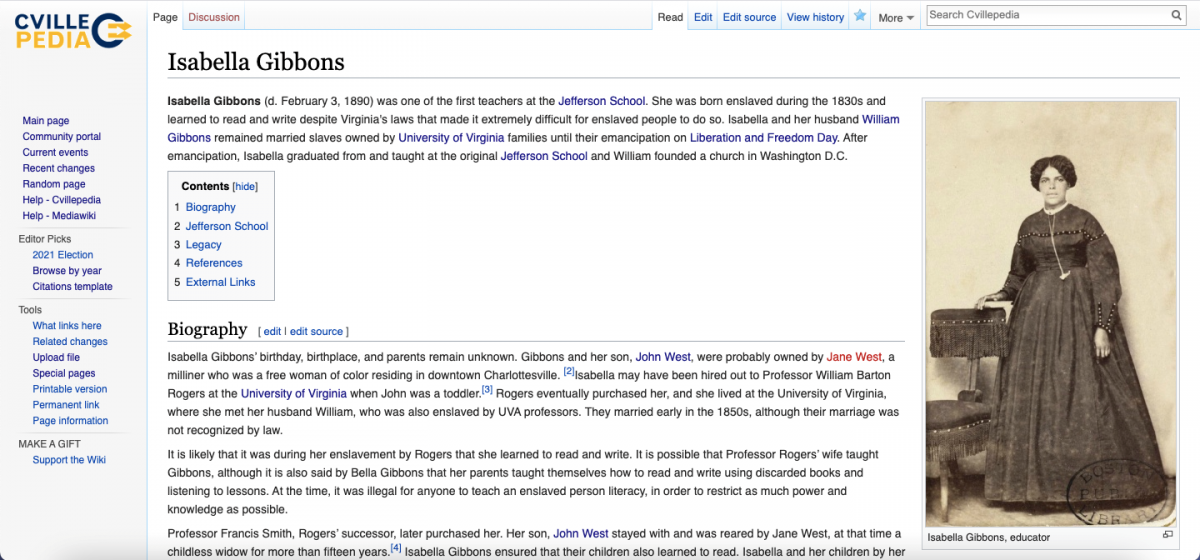
There is no finite amount of history. After spending a summer adding to the historical record, I have concluded that the only limits on it are what we are willing to learn. History itself will only ever expand. This summer, my responsibility was to contextualize and contribute to the local historical record, revealing shades of gray in some figures’ lives while highlighting other figures who had been forgotten or erased. I wrote more than fifty articles for Cvillepedia, Charlottesville’s hyperlocal online encyclopedia. It is a highly democratic historical forum –– anyone can add to it, and anyone else can change it –– so your work must be solid enough to avoid crumbling when other editors examine it. Therefore, I cited sources for everything that could possibly be contested, and I wrote in a highly precise, matter-of-fact way. My specific task was to write as many high-quality, accurate articles as possible about the Civil War and its effects.
Although they may seem far away, the Civil War and Reconstruction remain extremely relevant to the present day, as exemplified by the long fight to remove Charlottesville’s Confederate statues. Those statues were not put up in the immediate aftermath of the war. Instead, civic leaders built them decades later in part to reinforce the culture of Jim Crow segregation. Knowing this history is one of the most important tools we have for understanding our present and creating a better future.
As I chose what to write about this summer, I found myself gravitating towards the effects of the Civil War more than the battles. I’ve found that writing about people and specific moments in a society’s history brings the relevance of the past into the present. It’s nearly comparable to learning about another country’s culture. My first articles were about locals heavily involved in the radical process of Reconstruction, such as James T. S. Taylor, who championed Black suffrage in Virginia’s 1867-68 constitutional convention, or Isabella Gibbons, who served as a teacher before and after securing her freedom. I spent my time downtown at the Albemarle Charlottesville Historical Society, researching my articles with a mixture of print sources from the archives and online databases. I wrote biographies of Black Union soldiers from the Charlottesville-Albemarle area, displaying the Nau Center’s work on another platform.

As my internship went on, I wrote about aspects of local history that I had never heard of before, such as McKee Row, a multiracial community razed to create “whites only” public spaces. I got to follow threads: learning about the Jefferson School led me to learning about Black schools after the end of Reconstruction. This research made it possible for me to interview former students at the St. John Rosenwald School in Gordonsville, which in turn led me to the Albemarle Training School, which many of those students attended after graduation. I got to talk to real people who experienced this history, reminding me that the “distant” history of the nineteenth century was barely a lifetime ago. Throughout the process of researching, writing, and publishing my work, I spent time organizing the website to make sure people could find this information easily. I practiced communicating my research to others who were less familiar with Cvillepedia and its articles. I taught myself how to use the website, learning almost entirely by copying other pages that featured the information I wanted. By the end of the summer, I began to teach other volunteers how to use Cvillepedia.
Near the end of my internship, I thought about the sense of fleeting permanence that comes with working in online spaces. There is a strange duality to it: both the knowledge that your words are etched into the digital stone, mummified in HTML, and the knowledge that Cvillepedia’s biggest problem is dead links to sources that no longer exist. My work is permanent only as long as someone deigns to keep the site running. In a way, it reminds me of the fluid nature of memory. Something exists only for as long as we remember it.
I added to the historical record in other ways, too. For two days in mid-July, my colleagues and I spent time on the front porch and the roof of the Historical Society, watching and recording as a construction crew chipped away at the base of the monument to Confederate General Robert E. Lee. The man who funded the statue--local philanthropist Paul Goodloe McIntire--also funded the public library building that the Historical Society now operates from. One of these gifts (the public library) has stood the test of time because it improved the quality of life for all members of the community. The other has been removed because, as Professor Willis Jenkins explains, it was above all a monument to “white power in the Jim Crow era."[1]
Between taking pictures and noting timestamps for our own records and future researchers, my colleagues and I considered plans for an updated tour of downtown, which used to feature the Lee statue and a nearby statue to Thomas “Stonewall” Jackson. We decided a good theme was change. Charlottesville is not a static place. No community is. It is a living thing created by living people, much like history. Taking down a statue does not erase history. The object itself is part of the record along with what it represents. The removal is history, too, showing what values a community holds now. The photographs of the statue will not vanish, nor the memories people have of it. We record things to remember. I hope to keep adding to the historical record in accessible spaces, so we can move towards a more educated and equitable future.
Images: (1) Isabella Gibbons (courtesy Albert and Shirley Small Special Collections Library), (2) Detail of "Isabella Gibbons" Page, Cvillepedia.org
Notes:
[1] Willis Jenkins, “Ethics Under Pressure: An Autoethnography of Moral Trauma,” Charlottesville 2017: The Legacy of Race and Inequity, ed. Claudrena N. Harold and Louis P. Nelson (Charlottesville, VA: University of Virginia Press, 2018).
